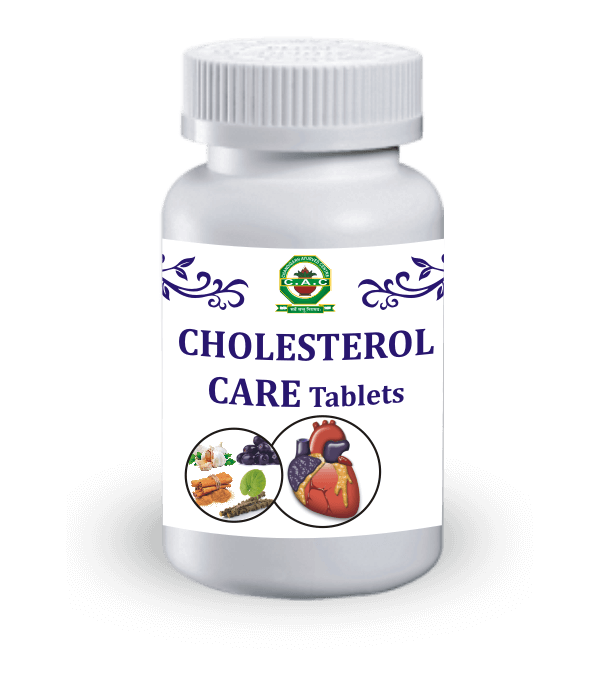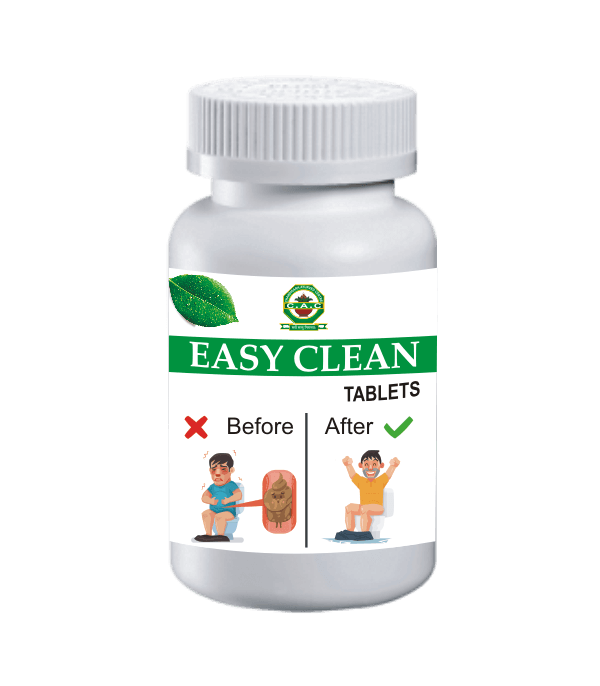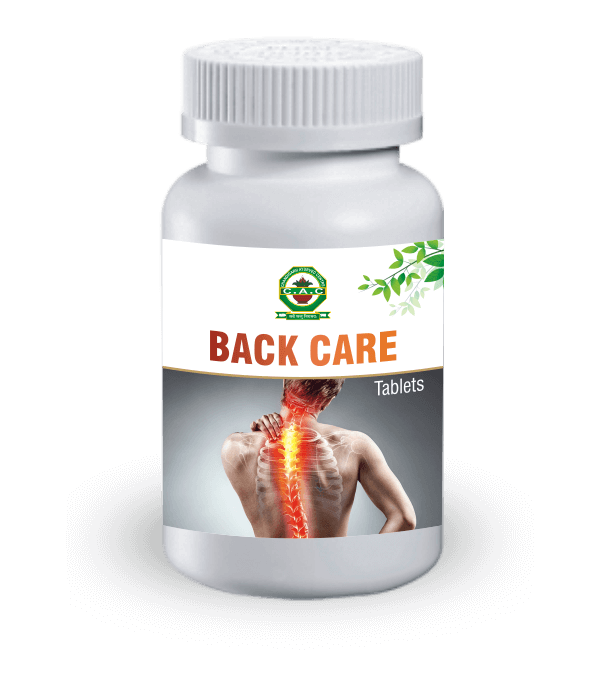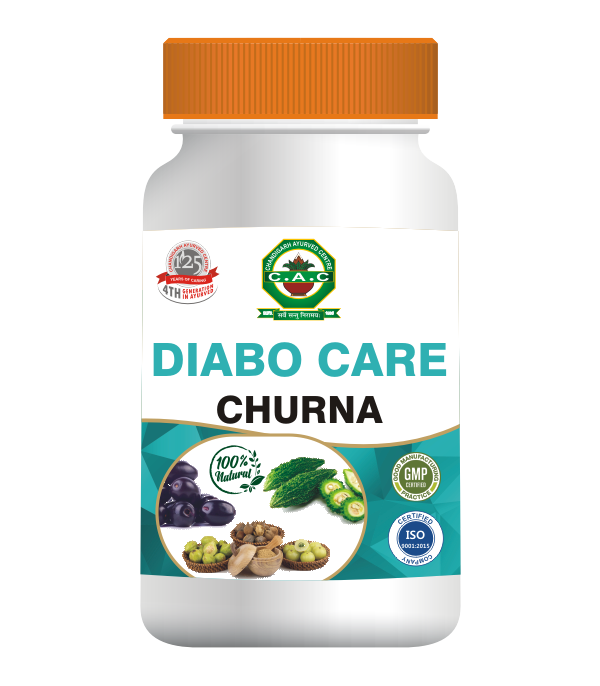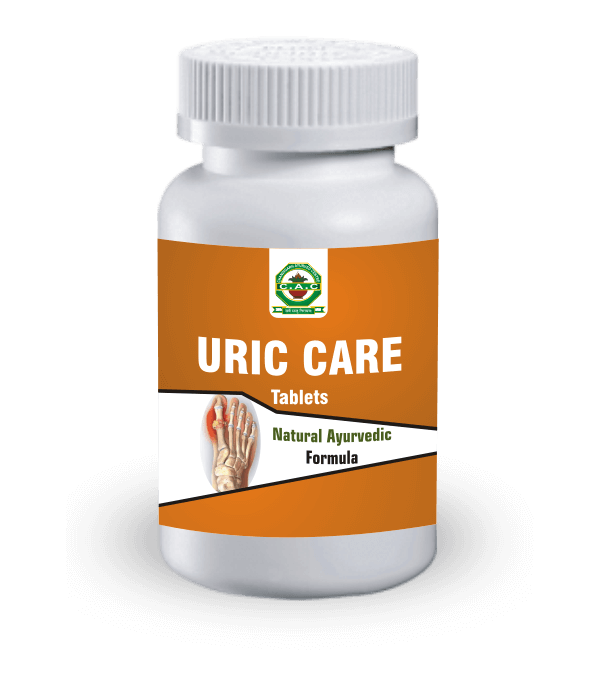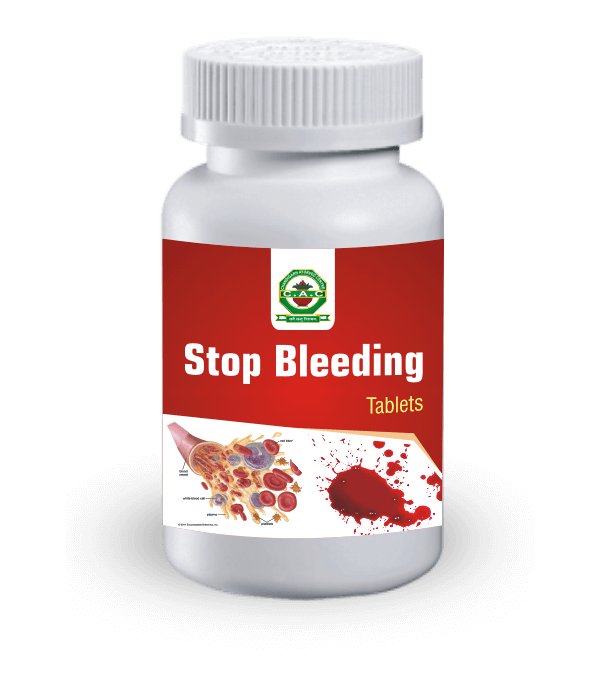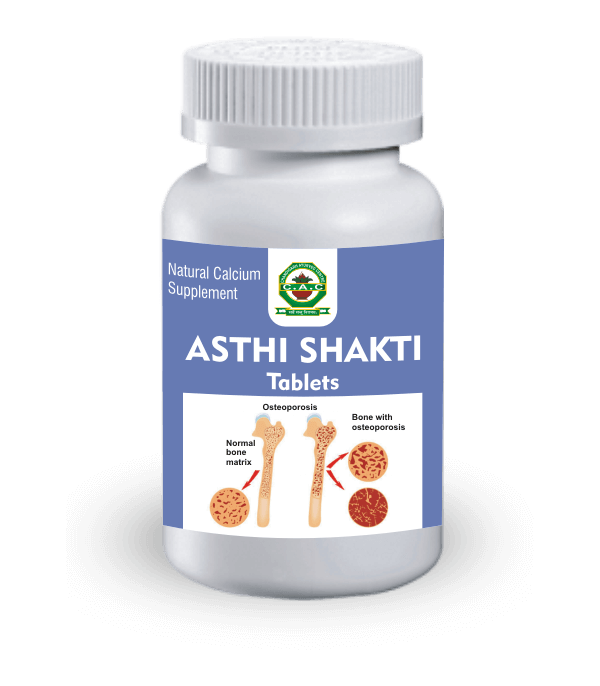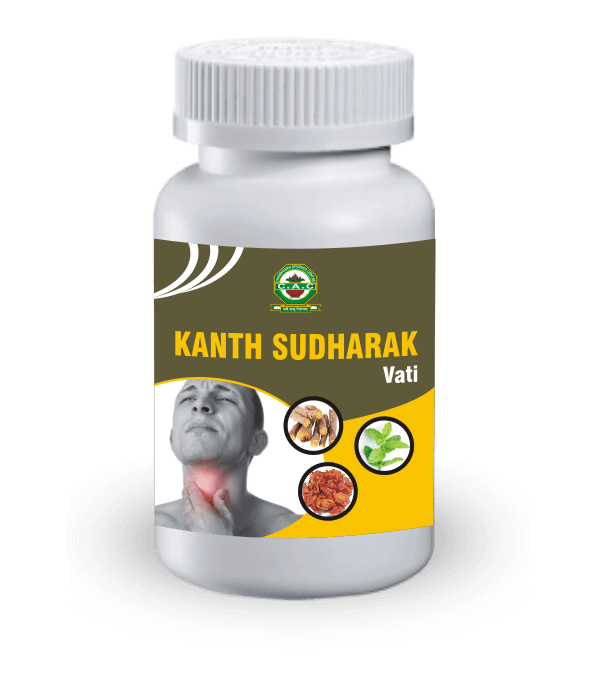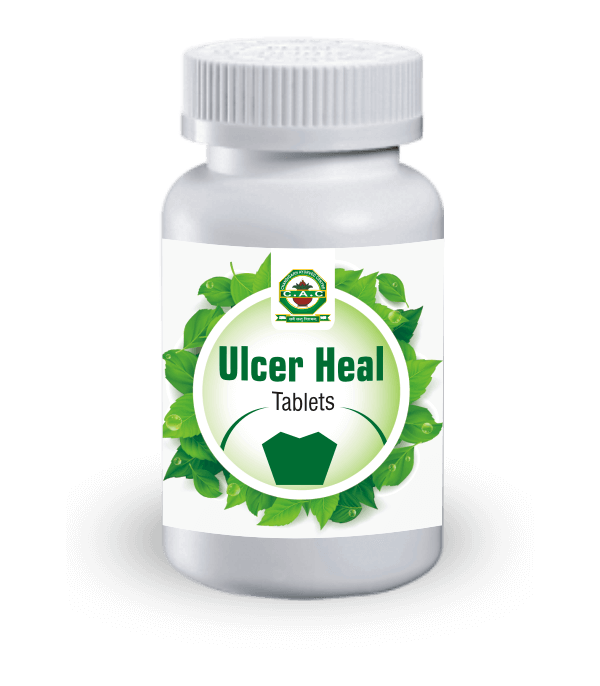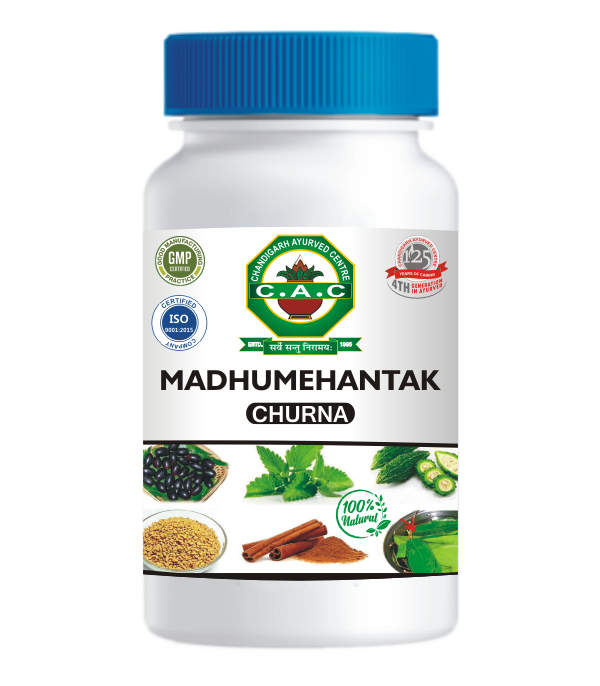Author Archives: Dr. Vaidya Karanvir Singh
CAC CHOLESTEROL CARE TABLETS
- January 5, 2023
- Posted by Dr. Vaidya Karanvir Singh
- 0 Comment(s)
CAC Cholesterol care tablet is a purely herbal formulation which is composed of a combination of different types of herbs. These herbs help in strengthening of heart muscles, regulate heart rate, keep a check on blood pressure and helps in controlling cholesterol levels. Now-a-days many people are suffering from heart problems due to bad eating habits and unhealthy lifestyle. High level of triglycerides and cholesterol are the main reasons for heart attack.
WHAT ARE THE INGREDIENTS OF CAC CHOLESTEROL CARE TABLETS?
The ingredients of CAC Cholesterol care tablets are:
- Karela (Momordica charantia)
- Jamun (Syzygium cumini)
- Garlic (Allium sativum)
- Dalchini (Cinnamomum verum)
- Yavakshar (Hordeum vulgare)
- Giloy (Tinospora cordifolia)
PROPERTIES OF DIFFERENT INGREDIENTS OF CAC CHOLESTEROL CARE TABLETS
There are different herbs present in CAC Cholesterol care tablets. Each herb has its own properties and different mode of action. Following are the properties and functions of herbs present in CAC Cholesterol care tablets:
KARELA
Karela is known as bitter gourd. It is considered to be one of the healthiest vegetables. It is consumed as a vegetable, juice or pickle. It is full of different vitamins, minerals and antioxidants. It decreases the amount of LDL (bad cholesterol) in blood and thus decreases the risk of heart attack. It also helps in unclogging of blocked arteries.
JAMUN
Jamun is called java plum or Indian blackberry. It is very beneficial for promoting overall heart health. It is loaded with potassium. It prevents deposition of plaque inside the walls of arteries and thus hardening of arteries. It checks blood pressure and keep the blood vessels healthy.
GARLIC
Garlic has a good effect on digestive system and cardiovascular health. It is rich in antioxidant properties and is anti-inflammatory in nature. It fights free radicals and prevents cell damage. It regulates cholesterol levels in blood and helps in lowering blood pressure. It reduces plaque buildup inside the walls of arteries.
DALCHINI
Dalchini is used in Indian cuisine for its special aroma and taste. However, it is well known for its medicinal properties. Dalchini has anti-inflammatory and antibacterial properties. It helps in checking the amount cholesterol and triglycerides in blood and thus helps in prevention of cardiovascular disease.
GILOY
Giloy is anti-inflammatory and cardio-protective in nature. It is rich in antioxidants and thus protects cell from damage. It increases immunity of body and helps in eliminating body toxins. It regulated triglyceride levels in blood and relieves stress.
WHAT ARE THE USES OF CAC CHOLESTEROL CARE TABLETS?
CAC Cholesterol care tablets are useful in the following health conditions:
- Increased triglycerides level in blood
- Blockage of arteries
- High blood pressure
- Stroke
- Congestive heart failure
- Heart attack
- Coronary artery disease
DRUGS FOR MAINTAINING CHOLESTEROL LEVELS IN BLOOD AND THEIR SIDE-EFFECTS
Following are the drugs which are given for regulation of cholesterol levels in blood:
STATINS
Statins help in lowering of cholesterol levels in blood. They are also anti-inflammatory in nature and thus help in reducing inflammation in the blood vessels. They are mostly prescribed to patients of heart attack, stroke, bypass surgery, etc. Some of the statins are atoravastin, fluvastatin, lovastatin, etc.
Side effects:
- Dizziness
- Headache
- Fatigue
- Diarrhea or constipation
- Indigestion
- Feeling sick
CHOLESTEROL ABSORPTION INHIBITOR
Cholesterol absorption inhibitors are the medicines which help in decreasing triglyceride levels and LDL cholesterol in blood. It also helps in increasing HDL cholesterol (good cholesterol) levels. Ezetimibe is an example of cholesterol absorption inhibitor. They should not be taken in pregnancy and lactation.
Side effects:
- Fatigue
- Pain in abdomen
- Diarrhea
- Soreness in muscles
CALCIUM CHANNEL BLOCKERS
The calcium channel blockers relax muscles of blood vessels, thereby causing dilatation. They help in slowing heart rate. They are mostly preffered for older people. The drugs which come under calcium channel blockers are amlodipine, diltiazem, etc. These are given in combination with statins.
Side effects:
- Headache
- Nausea
- Constipation
- Dizziness
- Rashes
- Flushing
CAC – EASY CLEAN TABLET
- January 5, 2023
- Posted by Dr. Vaidya Karanvir Singh
- 0 Comment(s)
These tablets helps to keep stomach clean and provide relief from constipation. According to ayuurveda if stomach is not clean than it can lead to development of many diseases in the body. These tablets helps to pacify vitiated vata and pitta dosha in the body. The ingredients used have properties that helps to treat Acidity, indigestion, chronic constipation, colic pain, belching and bloating.
INGREDIENTS IN EASY CLEAN TABLETS:
- Sanay patti (Cassia angustifolia ): It helps to pacify vata and pitta dosha which are main cause of constipation. It have active bio compounds that helps to loosen up stool and also regulates bowel movements. It has laxative and purgative properties that helps to expel out waste from large intestine.
- Ajwain (Trachyspermum ammi) : The active compounds present in ajwain helps to promote digestion by enhancing the secretion of digestive juices in stomatch thus provide relieve from constipation , acidity, and indigestion.
- Svarjikshar : It has alkalinizing effects on body thus helps to relieve acidity and alsso aids in digestion.
- Kali mirch (Piper nigrum ): It helps regulate the secretion of HCL in stomach thus facilitates digestion. It has carminative properties that helps to relieve flatulence and also inhibits bacterial growth which cause gas.
- Yastimadhu (Glycyrrhiza glabra): It helps to promote better absorption of nutrients and also have high concentration of fiber which helps to relieve constipation naturally. It also have anti-flatulent that helps reduce formation of gas thus reducing flatulence , abdominal distension,and bloating.
- Chhoti elaichi ( Elettaria cardamomum): The preesnce of active compound menthanolic extract helps to ease gasto-intestinal problems such as flatulence, indigestion, acidity and stomach aches.
- Triphala churan : The three contents amlaki, bibhitaki and haritaki used in the preparation of triphala have astringent, lubricant, laxative properties along with it they are rich source of dietary fiber that helps to relieve chronic constipation and also helps in digestion of food.
- Saunf ( Foeniculum vulgare ): It contain ample amount of dietary fiber that helps to stimulate activities of intestine by escalating the bile secretions and gastric juices along with that also maintain peristaltic movement for smooth functioning of bowel.
- Nisoth (Operculina turpethum): It has strong purgative properties that helps to increase bowel movement thus beneficial for treatment of chronic constipation.
- Nimbukamlam( Citric acid ): It acts as stimulant and helps to flush out toxins from the body thus helps to cure indigestion, constipation and flatulence
- Castor oil : After consumption it break down into ricinoleic acid in small intestine and is absorbed there. Ricinoleic acid has potent laxative properties that help to increase movement of muscles in intestine thus helps facilitating smooth movement of waste out of body.
USES OF EASY CLEAN TABLETS :
- Abdominal pain
- Bloating
- Constipation problems
- Loss of appetite
- Hyperacidity
- Indigestion
- Hemorrhoids
- Rheumatoid arthritis
- Acidic belching
- Headache
- Colic pain
- Intestinal disorders
- Supports intestinal immunity
Compared to East Clean Tablets the allopathic counterpart is Biscodyl
Biscodyl comes under class of drugs called as stimulant laxatives. It stimulates bowel movements by working on colon. Show effect in 6-12 hours when taken by oral route but suppositories take 10-45 minutes to show full effect.
MECHANISM OF ACTION
It stimulates the parasympathetic nerves in colon that increase the peristaltic movements and secretions that helps to ease out constipation.
It is present in market under brand names :
- Bidlax
- Baxative
- onlax
- Bo lax
- Julax
- Dulcolax
SIDE-EFFECTS:
- Stomach ache
- Rectal burning
- Nausea
- Vertigo
- Diarrhea
- Blood in stool
- Electrolytes and fluid imbalance
- Dizziness
- Vomiting
- Abdominal cramps
CONTRAINDICATIONS:
- Appendicitis
- Ulcerative colitis
- GI perforation
- Hypokalemia
- Breast-feeding mother
- Pregnancy
CAC – BACK CARE TABLET
- January 5, 2023
- Posted by Dr. Vaidya Karanvir Singh
- 0 Comment(s)
These tablets are herbal and purely Ayurvedic prepration. These tablets helps to strengthen back muscles by relieve back pain associated with arthritis, sciatica , infection of spine, kidney infection etc. Tablets helps to pacify the vitiated Vata dosha and also maintain proper circulation of blood. These tablets are helpful in relieve mild to moderate pain all over the body and also helps to relax muscles. It contain ingredients with natural pain relieving properties.
INGREDIENTS OF BACK-CARE TABLETS
- Ashwagandha ( Withania somnifera): Bioactive ingredient of ashwagandha has potent anti-inflammatory and analgesic properties that provide relief from inflammation and pain. It helps to decrease markers for inflammation thus improving immune cells .
- Kakamachi ( Solanum nigrum): It has anti-inflammatory, antiseptic and analgesic properties thus helps to relieve inflammation and swelling in body and eliminating pain. It also have antioxidant properties that helps to reduce damage caused by free radical. It is also used in UTI due to its diuretic properties.
- Nirgundi (Vitex negundo):Nishindine alkaloid present in plant has analgesic and anti-inflammatory properties thus helps to diminish muscle spasm and joint pain. It also helps to improve blood circulation in the body.
- Shudh Guggul (Commiphora mukul): It helps to pacify vitiated vata and kapha which plays main role in joint pain and swelling. It is natural vasodilator thus helps to treat muscle spasm, arthritic conditions, sore muscles and other inflammatory conditions.
- Vishtinduk (Strychnos nux vomica ):It pacifies vata dosha and kapha dosha. IT has analgesic and nervine stimulant properties thus relieve pain and swelling in body. It also posses anti-spasmodic properties along with it also have cardiac stimulant properties.
USES OF BACK-CARE TABLETS :
- Headache
- Mild to moderate pain all over the body
- Menstrual cramps
- Muscle aches
- Backache
- Knee pain
- Rheumatoid arthritis
- Cervical spondylitis
- Osteoarthritis
- Sciatica
- Cancer of the spinal cord
- Infections of the spine
- Ruptured or herniated disc
- Arthritis
- Kidney infections
Compared to Back-Care Tablets the allopathic counterpart is Ibuprofen :
Ibuprofen comes under class of drugs called Non-steroidal Anti-inflammatory drugs (NSAID’s).It is used provide relief from fever, pain and inflammation in body. It takes at least an hour to being its work in body.
MECHANISUM OF ACTION:
It is a non-selective Cyclo oxygenase inhibitor which is involved in synthesis prostaglandins. Prostaglandins are mediators of inflammation, pain and fever in body. Thus decrease in levels of prostaglandins relieves pain , inflammation and fever.
Ibuprofen is accessible in market under the brand name of :
- Ibucon
- Avibru
- Ibugesic
- Myofen
- Tricofen
- Ibulite
- Bren
- Brufen
- Cipgesic
SIDE-EFFECTS:
- Rash
- Hives
- Unexplained weight gain
- Excessive fatigue
- pale skin
- Nausea
- Shortness of breath
- Fever
- Swelling of face ,arms, throat , eyes or hands
- Loss of appetite
- Fast heartbeat
- Yellowing of skin
- Hoarseness
- Difficulty in swallowing
- Headache
- Stiff neck
- Blurred vision
- Confusion
- Tinnitus
- Aggression
- Constipation
- Dizziness
- Diarrhea
CONTRA-INDICATIONS
- Renal impairment
- Cardiac conditions
- Hepatic disorders
- Asthma
- Stomach problems
- Blood disorders
DIABO – CARE CHURNA
- January 5, 2023
- Posted by Dr. Vaidya Karanvir Singh
- 0 Comment(s)
This churna is herbal and purely Ayurvedic preparation. It Basically helps to control the level of sugar in the blood. It also helps to balance the three doshas specifically Kapha dosha. It contain ingredients like haldi, dalchini, kalizeeri that hasanti-diabetic properties thus helps to reduce symptoms of diabetes. This churna has anti-bacterial, anti-microbial, immuno-modulator and antioxidant properties.
INGREDIENTS OF DIABO-CARE CHURNA
- Dalchini (Cinnamomum verum ):It is used in management of type-2 Diabetes. It helps in regulation of insulin production. It also helps to decrease insulin resistance by body cells thus reducing blood sugar level. It also helps to boost the digestive system as healthy digestive system tends to process , digest sugar and expel out excessive sugar to maintain blood sugar levels.
- Tulsi(Ocimum sanctum) : It is known as queen of herbs because of its many benefits. It helps to promote function of beta-cells of pancreas which in turn boost the uptake of glucose by muscle cells. It also helps to regulate cortisol levels to keep hormone level balanced thus relieving fatigue and stress.
- Haldi( Curcuma longa ):It has potent anti-diabetic properties which play classical role to sooth blood sugar levels in body. It also stimulates the beta-cells in pancreas thus improving the production of insulin. It helps to reduce breakdown of starch into glucose thus reducing level of sugar in blood. It also possess astringent and anti-flatulent properties thus improving digestion.
- Ashwagandha ( Withania somnifera): It has potent hypoglycaemic properties that helps to alleviate the blood sugar levels of body. It helps to enhance the production of insulin by beta-cells. It inhibits the breakdown of starch in body into glucose to balance blood sugar levels.
- Kaliziri (Centratherum anthelminticum ): It has bitter and astringent properties thus helps to manage blood sugar by improving body metabolism. It readily stimulates the secretion of insulin by beta-cells and also monitors the metabolism of carbohydrates due to its potent anti-glycemic properties.
USES OF DIABO-CARE CHURNA :
- Diabetes
- Diabetic Neuropathy
- Immunity booster
- Obesity
- Rejuvination
- Anti septic
- Diabetic carbuncles
- Maintain healthy kidneys
Compared to Diabo Care Churna the allopathic counterpart is Rosiglitazone :
It is a anti-diabetic drug that comes under the class of drugs called Thiazolidinedione . It enhance the response of body cells toward the insulin. It take approximately about an hour peak plasma concentration.
MECHANISM OF ACTION :
It act as agonist at PPAR( peroxisome proliferator activated receptor ) in certain tissues like muscle tissues, adipose tissues and liver. It regulates the transcription of gene for insulin- response which regulates transport, production and utilization of glucose thus improving sensitivity toward insulin in tissues.
It is available in market with brand name:
- Avandia
- Roglin
- Rosigon
- Rosicon
- Senzia
SIDE-EFFECTS :
- Blurred vision
- Dry mouth
- Increased thirst
- Nausea
- Pale skin
- Abdominal pain
- Chest pain
- Decreased urination
- Dry skin
- Sweating
- Pain in shoulder , jaw, arms or neck
- Irregular heart beat
- Unusual bruising
- Vomiting
- Troubled breathing
- Swelling in feet or hand
- Unexplained weight loss
- Fever
- Ear congestion
- Muscle ache
- Shivering
- Troubled sleeping
- Joint pain
- Sore throat
CONTRA-INDICATIONS :
- Heart conditions
- Hypersensitivity
- Active liver disease
- Diabetic keto-acidosis
CAC – URIC CARE TABLET
- January 5, 2023
- Posted by Dr. Vaidya Karanvir Singh
- 0 Comment(s)
These tablets are herbo-mineral tablets and purely ayurvedic formulation. These tablets helps to balance the aggravated kapha dosha. It helps to reduce kapha that impacts high levels of uric acids in body and act as potent diuretic. These tablets helps to relieve the pain while passing of urine and also clears obstruction of urine. Also helpful in detoxification of kidneys. The ingredients used are helpful to treat oedema and various kidney disorders as they have hypotensive, Aphrodisiac, anti-microbial and diuretic properties.
INGREDIENTS OF URIC CARE TABLETS
- Gokhru (Tribulus teritris) : It is useful treatment of urinary incontinence, Burning micturation as it has anti-bacterial and diuretic properties. It is also helpful in prevention of urinary infections. It also have anti-lithiasis property that helps in prevention of kidney stone formation.
- Imali kshar (Tamarindus indica) : It is an ayurvedic preparation that is beneficial in treatment of abdominal colic pain, urine retention, indigestion etc. It has detoxification properties that helps to remove toxins from kidneys thus prevent formation calculi there.
- Yavakshar (Hordeum vulgare) : This ayurvedic preparation is light in digestion that helps to pacify vitiated kapha dosha. It also helpful in the treatment of Dysuria and urinary calculi. Also helpful to relieve pain and bloading in stomatch.
- Kalmi shora ( Potassium nitrate) : It helps to flush out kidney stones from the body naturally. It also reduce the risk of calculi formation.
- Nausadar ( Ammonium chloride) : It helps to make urine more acidic thus preventing formation of renal stones in kidney . It is also useful in flushing out certain toxins and drugs from the body. It also lowers the level of uric acid in body.
- Swarn gairik( Red ochre) : It has astringent property thus helps in renal calculi. It is also helpful to pacify vitiated kapha and pitta dosha in body.
USES OF URIC CARE TABLETS :
- Renal calculus
- Painful urination
- Obstruction in urine
- Reduces blood urea level
- Detoxify kidneys
- Slow down the process of agieng
- Balance Psychological ailments
Compared to Uric Care Tablets the allopathic counterpart is Allopurinol
This medication is used to decrease the level of uric acid in blood and prevention of certain kidney stones. It comes under class of drugs called Xanthine oxidase inhibitors. It does not work straight away and may take several weeks to show effect.
MECHANISUM OF ACTION
It inhibits the enzyme xanthine oxidase that helps in the production of uric acid thus reducing the levels of uric acid in the body. It also inhibits the synthesis of purine in the body.
Allopurinol is available in market with brand names :
- Aloric
- Allopurinol
- Allgout
- Ciploric
- Cemia-SR
SIDE-EFFECTS :
- Joint pain
- Drowsiness
- Fever and chills
- Rashes
- Nausea
- Abnormal liver function
- Loss of appetite
- Jaundice
- Itching
- Dark urination
- Diarrhea
- Painful urination
- Numbness
- Worsening gout symptoms
- Nose bleeding
- Cataract
- Cardio-vascular abnormalities
- Foot drop
- Renal failure
- Bruise
CONTRADICATIONS
- Hypersensitivity
- Breast feeding mother
- Diabetes
- High blood pressure
- Liver disease
STOP BLEEDING TABLET
- January 5, 2023
- Posted by Dr. Vaidya Karanvir Singh
- 0 Comment(s)
These tablets are purely herbal formulation that acts as an Anti-coagulant. It helps to reduce or stop heavy bleeding in body. In case of bleeding the body starts to form clots to stop the bleeding. Stop bleeding tablets helps to stop[ breaking of clot thus reducing the unwanted excessive bleeding. The ingredients used in the tablets have analgesic, anti-inflammatory and anti-coagulant properties. These tablets also pacifies the vitiated Pitta dosha and helps in detoxification of Rakta dhatu.
INGREDIENTS OF STOP BLEEDING TABLETS :
- Nagkesar ( Mesua ferrea ): It is helpful in pacifying aggravated pitta dosha which is the common cause for many bleeding disorders. It reduce pain , swelling and shrinks the pile mass thus stops bleeding. It has haemostatic properties thus hinders normal blood flow and promotes blood clotting.
- Laksha(Laccifer lacca) : Laksha is a reddish brown resin which is secreted by female lac insect. Due to its astringent property it helps in stopping bleeding and fasten the wound healing process thus is useful in treatment of ulcers, wounds and other bleeding disorders.
- Moch ras( Bombax ceiba ) : It is raise obtained from Shalmali tree. It has cooling, astringent, tonic and demulcent in nature. It is helpful in the treatment of Hemoptysis, Menorrhagia and other bleeding disorders due to above said properties.
- Swarn garic (Red ochre) : It is has pitta-nashak and vran-ropak properties that helpful in bleeding disorders and menorrhagia. Its tropical application provide relief in boils, burns and ulcers.
- Kehrwa Pishti : It is ayurvedic formulation prepared from amber which helps to balance pitta and rakta in the body. It enhance the formation of clots to prevent blood loss thus helps in treatment of Metrorrhadia, bleeding hemorrhoids, menorrhagia and ulcerative colitis.
USES OF STOP BLEEDING TABLETS :
- In idiopathic thrombocytopenic purpura
- Helps to stop bleeding from nose and mouth
- Peptic ulcers
- Bleeding disorder
- Heavy menstrual bleeding
- Wounds & cuts
- Ulcerative colitis
- Bleeding piles
Compared to Stop Bleeding Tablet the allopathic counterpart is Tranexamic acid
It is an anti-fibrinolytic agent that is used in Bleeding disorders to minimize or prevent excessive bleeding. It is also used in Hemophilia patients after surgery to block. It show full effect after 24hours of intake and is usually used for short time to treat bleeding.
MECHANISUM OF ACTION
It inhibits the activation of Plasminogen as it binds at several distinct sites. Binding with Plasminogen it prevent the fibrinolysis of fibrin thus stabilizing the clot and intercepts the hamorrhage.
It is avaliable in market under brand name :
- Bio-stat
- Capitrax
- Clotawin-T
- Clip
- Clot-XL
SIDE-EFFECTS :
- Vomiting
- Fatigue
- Sinus disorders
- Musculoskeletal pains
- Headache
- Nausea
- Hypotension
- Migraine
- Anemia
- Back pain
- Abdominal pain
- Joint pain
- Allergic dermatitis
- Diarrhea
- Muscle cramp
- Hypotension
- Anemia
- Lightheadedness
- Painful urination
- Feeling unhappy
- Seizure
- Rapid breath
- Swelling and warmth in leg or arm
CONTRADICATION :
- History of thromboembolism or thrombosis.
- On combination hormonal contraceptives.
- Hypersensitivity to tranexamic acid.
- Heart valve disease
- Stroke
CAC – ASTHI SHAKTI TABLET
- January 5, 2023
- Posted by Dr. Vaidya Karanvir Singh
- 0 Comment(s)
These tablets are blend of amazing herds with therapeutic benefits. In human body bones are the most rigid which constituent part of endoskeleton. Protection of the various organs is the main function of bones. Bones provides support and right shape to the body and also helps in locomotion. these tablets have indregients like Ashwagandha, Amalaki, Abhrak bhasma, Yashad bhasma which helps to maintain the overall bone helps by providing natural calcium to bones. It also stimulates immunity and work wonders in pacifying Pitta Dosha.
INGREDIENTS :
- Ashwagandha ( Withania somnifera ) : It improves bone calcification and also increase the number of cells that produce bone tissues thus promote bone health and reduce the risk of fracture. It is also helpful in relieving inflammation and pain in joints. It helps to treatconditions like osteoporosis and fibromyalgia.
- Shilajit : It is a potent drug with various health benefits. It helps to maintain Bone mineral density in Postmenopausal women by reducing inflammation, oxidative stress and bone turnover caused by estrogen deficiency. These increase the risk of osteoporosis and bone fracture in postmenopausal women.
- Muktasukti bhasam :It helps to enhance bone mineral density, strengthen the connective tissues and bones thus preventing them from breaking. It also play vital role in improving the production of collagen in bones thus diminishing the risk of bone fracture.
- Amalaki ( Emblica officinalis ): It is a rich source of calcium which plays vital role to maintaining and building strong bones. It is also used in treatment of bone diseaseslike osteoporosis. It has anti-inflammatory properties that helps to relieve inflammation , swelling and pain in joints which is associated with arthritis.
- Abhrak bhasam : Elements like Iron, magnesium , potassium and calcium. these elements play important role in collagen synthesis, improve bone mineral density thus maintaining overall bone health. It also play important role in reducing stress in the body as it has powerful adaptogens.
- Yashad bhasam : It is made by purified zinc pieces. Zinc plays vital role in normal skeletal growth and bone homeostasis. It also promotes the regeneration of bones. It enhance the formation and activity of osteoblast and may improve collagen production.
USES OF ASTHI SHAKTI TABLETS :
- Osteoporosis
- Bone cancer
- Low bone density,
- osteogenesis imperfecta
- Bone related disorders
- Paget’s of bones(chronic condition)
Compared to Asthi Shakti Tablets the allopathic counterpart is Alendronate
Alendronate is in class of drugs called Bisphosphonates. It is used in prevention and treatment of certain types of bone loss in adults. It work by preventing breakage of bones and improves bone density. It is used to treat osteoporosis in postmenopausal women and in individuals who are taking corticosteroids for long period. It may take 3 months or more to show full effects.
MECHANISUM OF ACTION
It binding with bone hydroxyapatite which in turn inhibits osteoclast to not induce apoptosis resulting in decrease bone adsorption which is shown through decreased urinary calcium and deoxypyridinoline.
It is available in market under brand name :
- Bifosa
- Restofos
- Osteofos
- Alenost
- Stoplos A plus
- Aldrofos
SIDE-EFFECTS :
- Heartburn
- Muscle pain
- Skin rashes
- Nausea
- Gas
- Constipation
- Headache
- Swelling of hands or legs
- Swelling of joints
- Diarrhea
- Dizziness
- Chest pain
- Hives
- Hoarseness
- Fever
- Breathing difficulty
- Swollen Gums
- Difficulty in swallowing.
- Hair loss
KANTH SUDHARAK TABLET
- January 5, 2023
- Posted by Dr. Vaidya Karanvir Singh
- 0 Comment(s)
About tablet: Kantha Sudharak Vati is a pure herbal formulation by Chandigarh Ayurved Centre is an herbal expectorant that has soothing effect on throat. It works by pacifying the vata and Kapha dosha (or swash kas har) that sticks to respiratory passage and pulls out as sputum. It also remove bad breathe. It is free from chemicals, preservatives and any kind of fillers. It is useful in cough, inflamed throat, improve quality of voice.
Indications:
- Soreness of throat
- Hoarseness of voice
- Irritation
- Ache
- Inflammation of throat
- Chronic laryngitis
- Cough
- Bad breath
Ingredients:
- Mulethi
- Ela
- Lavang
- Javitri
Mulethi (Glycyrrhiza glabra): It contains licorice that has healing and anti-inflammatory properties. It soothes the inflamed sore throat as well as gut lining, healing stomach ulcers and for respiratory system it acts as expectorant.
Ela (Elettaria cardamomum): It has excellent properties like anti-inflammatory, antiseptic, expectorant, stimulant, carminative, digestive, antispasmodic. It helps in balancing vata and kapha dosha in the respiratory tract. It is helpful in bad breathe, cough etc.
Lavang (Syzygium aromatic): Also known as clove balances kapha and pitta dosha. It is highly effective in cold, cough, asthma, wheezing, breathing difficulties, hiccups and also helpful in digestive disorders.
Javitri (Nutmeg): It helps in clearing throat, asthma, helpful in sore throat, has water and sputum absorption properties. It significantly reduces the bad breath in mouth, moisture in mouth as well as excessive thirst.
Allopathic counterpart of Kantha sudharak tablet along with its adverse effects:
STREPSILS LOZENGES:
It is a combination of two salts 2,4-dicholorobenzyl alcohol and amylmetacresol. These both are having antiseptic properties and relieves the discomfort of sore throat by killing bacteria and viruses in the mouth and throat. It provides warm and comfort feeling in throat.
Side effects of 2,4-dicholrobenzyl alcohol:
- Difficulty in breathing
- Swelling on face, throat, neck and throat
- Tongue soreness
- Hypersensitivity is increased
Side effects of amylmetacresol:
- Dizziness
- Drowsiness
- Confusion
- Nausea
- Upset stomach
- Sleepiness
Contraindications:
- Cannot be given in pregnancy
- Not recommended for children under 12 years of age
- Do not exceed recommended dose
CAC – ULCER HEAL TABLET
- January 5, 2023
- Posted by Dr. Vaidya Karanvir Singh
- 0 Comment(s)
Ulcer are formed when the mucus membrane of the gastrointestinal tract such as esophagus, stomach, small intestine and large intestine got inflammed due to H.pylori infection or excessive intake of ani-inflamatory medications such as asprin. Ulcers give symptoms like burning pain in the centre of the abdomen, hyper acidity etc. Ayurveda has natural herbs that cure the condition of ulcers effectively.
Ulcer Heal Tablet is a product of Chandigarh Ayurved Centre which is a blend of natural herbs and minerals providing soothing effect on ulcers. It has anti-inflammatory, antibacterial, anti-coagulant and analgesic properties. It pacifies the excess of pitta and vata dosha. It is 100% safe and natural without giving any side effects formed under the guidance of MD Ayurveda experts.
Benefits:
- Irritable bowel syndrome
- Heals ulcers
- Gastritis
- Restore body metabolism
- Pacifies Pitta and Vata doshas
- Provide cooling effect
- Abdominal cramps
- Removes bacterial infection
- Effective in inflammation and swelling
- Rectal bleeding
- ulcerative colitis
Ingredients:
- Kehrewa Pishti -100 mg
- Prawal Pishti -100 mg
- Guduchi satv -150 mg
- Aloe vera -100 mg
Kehrewa Pishti: It is an ancient Ayurvedic formulation which has natural Antibacterial and coagulation properties. It helps in healing wounds by clot formation and excessive loss of blood. It is also helpful bleeding disorders such ulcers, uterine bleeding, ulcerative colitis, menorrhagia etc.
Praval Pishti: Also called as moti pishti. It is an ancient ayurvedic mineral formulation made up of purified freshwater pearl infused with rosewater. It is a natural source of calcium. It is the best remedy for gastrointestinal issues like heart burn, peptculcers, indigestion, acid reflux, stomach pain etc.
Guduchi satva: Guduchi satva is an ayurvedic formulation made of starchy material extracted from the plant Tinospora cordifolia. It has antibacterial, anti-inflammatory properties, a natural antacid and an effective immunomodulator. It is helpful in managing ganstrointestinal disorders, cures infections, high fever, piles, vaginal discharge.
Aloe vera or Gritkumari: Aloe vera has highly effective anti-inflammtory and healing properties. it smoothes the inflamed skin. It is helpful in treating ailments like burns, acid reflux, acne, ulcers, piles and all the gastrointestinal disorders. It balances the excess pitta dosha inside the body.
Alopathic counterpart of Ulcer Heal along with its side effects:
Pantoprazole:
Pantoprazole is a proton pump inhibitor (PPI) which basically works by reducing the amount of acid production by blocking the cells that produces acid. It is often used in heart burn, gastric ulcer pain, gastroesophagial reflux disease (GERD) or heart burn. It encourages healing by controlling acid in the stomach.
Side effects:
- Prolonged use can lead to Vitamin B12 deficiency
- Can cause kidney disorders
- Increased hunger
- Increased thirst
- Stomach pain
- Nausea and vomiting
- Increased urination
- Trouble breathing
- Flushed dry skin
- Blurred vision
- Fruity breathe
- Unexplained weight loss
- Indigestion
Contraindications:
- Not to be given in children less than 5 years of age
- Kidney and liver disorders
- Breastfeeding mothers
- Who have food allergies
- Increased risk of side effects if used with levothyroxine , warfarin etc.
CAC – MADHUMEHANTAK CHURNA
- January 5, 2023
- Posted by Dr. Vaidya Karanvir Singh
- 0 Comment(s)
This churna is a herbal and purely ayurvedic formulation. It is a powerful combination of rejuvenating herbs used in yurveda for many years for diabetes and its complications. It is very effective in naturally lowering the level of sugar in blood. It has ingredients like Giloy, bilva patra , daru haldi , nemm patra, amla, babool etc that helps to relieve diabetes symptoms like carbuncles. It also have anti-inflammatory, anti-oxidant, anti-fungal and diuretic properties.
INGREDIENTS :
- Bilva patra ( Aegle marmelos ): It have active compound named feronia gum that helps to regulate the production of insulin from beta-cells into the blood stream. It also have low glycemic index that maintains blood sugar level.
- Giloy(Tinospora cordifolia ) : It enhance the production of insuline in body thus ultimately controls the level of blood sugar. It also helps to manage diabetes related complications like wounds, ulcers, kidney damage etc because of its anti-inflammatory and anti-oxidant properties.
- Methi ( Trigonella foenum-graecum ) : It has hypoglycaemic properties that helps to alleviate blood sugar level of body. It also reduce breakdown of starch into glucose which in turns lower the blood glucose levels.
- Jamun (Syzgium cumini ): It have active ingredients like jambosine and jamboline which helps to slow down the rate of sugar released into blood and also increase the level of insulin in body. It relieves the diabetic symptoms like frequent urination and thirst .
- Karela (Monordica charantia ): It cause more glucose to entre cells and helps body to process it and store in liver, fat and muscles. It also prevents the conversion of stored nutrients into glucose and its release into the blood.
- Tulsi ( Ocimum tenuiflorum ) : It has potent hypoglycemic properties as it alleviate the blood sugar levels in body. It also reduce the transformation of starch into glucose that in turn lowers the blood glucose levels.
- Daru haldi( Berberis aristata ) : It has potent anti-diabetic properties that helps to pacify the blood sugar levels. It also enhance the activity of Beta-cells in pancreas. The active compounds berberol and berberine present in daruhaldi anti-diabetic agents by mimicking insulin.
- Gurmaar( Gymnema sylvestre ) : It promotes the insulin response for food thus lessens the need for oral hypoglycaemic drugs and insulin therapy. It also block certain receptors in intestine . It helps to lower blood sugar level by controlling postprandial blood sugar levels.
- Vijayasar ( Pterocarpus marsupium ): It has excellent anti-glycemic properties that help in alleviatind blood sugar level of the body. It enhance the production of insulin by stimulate the beta-cells of pancreas.
- Saptrangi (salacia oblonga ) : The chemicals present in it prevents the absorption of sugar from the food by binding to enzyme called alpha-glucosidase.
USES OF MADHUMEHANTAK CHURNA :
- Relieve diabetes in natural and safe way
- Maintain insulin level
- Diuretic
- Keep pancreas healthy
- Prevent diabetes complications
- Maintain overall health and well being
Compared to Madhumehantak Churna the allopathic counterpart is Glimepride
It belongs to class of second generation sulfonylurea. It is anti-diabetic medicine recommended together with exercise and diet to treat type-2 diabetes. It take three hours to show maximum effects that last for about a day. It is not used for the treatment of type-1 diabetes. It has few cardiovascular affects that other sulfonylureas.
MECHANISUM OF ACTION :
It lowers the blood sugar by stimulating release of insulin by beta- cells as it increase the activity of intracellular insulin receptors.
It is available in the market under the brand name of :
- Zoryl
- Glimestar
- Amaryl
- Euglim
- Glypride
- Azulix
SIDE-EFFECTS :
- Weakness
- Nausea
- Low blood sugar
- Headache
- Allergic skin reaction
- Severe itching
- Dizziness
- Rash
- Hives
- Reddening of skin
- Diarrhea
- Vomiting
- Thrombocytopenia
- Leucopenia
- Cholestasis
- Weight gain
- Vertigo
- Pancytopenia
- Low sodium levels
CONTRAINDICATIONS :
- Diabetic ketoacidosis
- Hypersensitivity to sulfonylureas
- Type 1 diabetes


